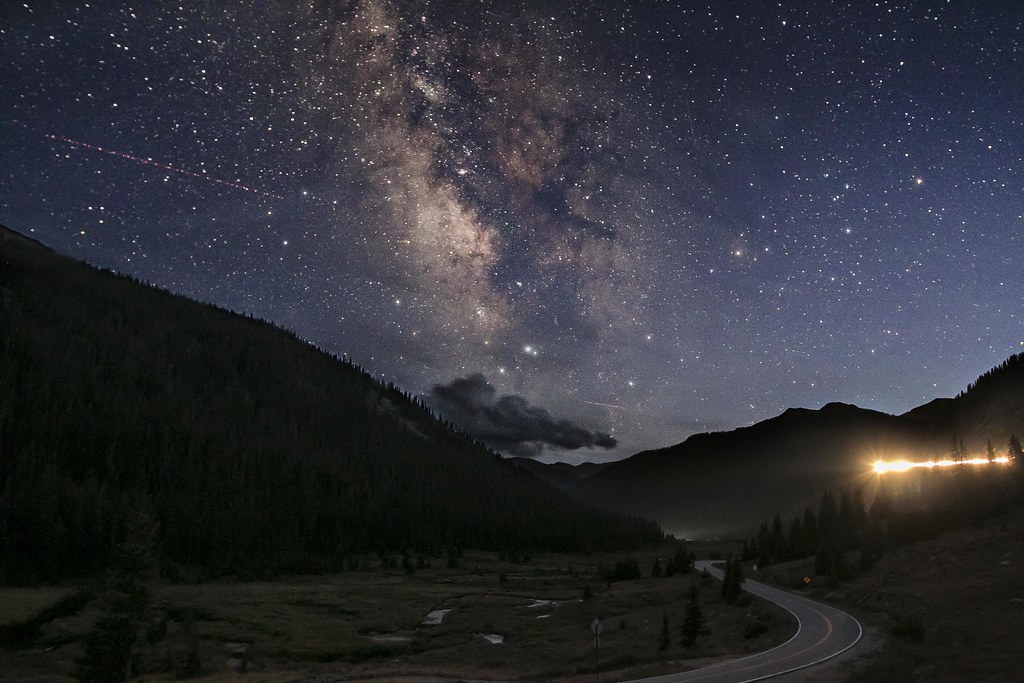The stars have aligned, and Colorado could get a killer show this weekend from the Perseid meteor showers.
First, let's talk about the timing and details of this year's cosmic event. Then we'll review some of the best spots and strategies for gazing on the Front Range.
When to see the meteors:
The meteor shower will peak on Saturday and Sunday nights, Aug. 11 and Aug. 12., as the Earth passes through the cosmic dust cloud left in the blackness of space by the comet Swift-Tuttle in its century-plus orbit of the sun.
Conveniently, that's happening on a weekend.
Even better: The moon will enter its "new" phase on Thursday, which means the skies will be almost perfectly dark, and the weather forecast for both nights in Denver is looking "mostly clear."
The show starts in the evening, but the best time to watch will be after midnight, and especially from 3 to 5 a.m., according to the American Meteor Society.
Now, the big decision: Where will you go?
The case for the plains.
A lot of people instinctively head for the highest point possible, but some experts say that it's easier and just as effective to drive onto the plains.
"The biggest challenge, no matter where you go, is trying to get away from the light dome over Denver," says Ron Hranac, president of the Denver Astronomical Society.
It's quicker and easier to drive over the plains than the mountains -- so heading east can actually get you to some of our darkest skies very quickly. Also, you'll have wider views – better for spotting meteors, Hranac says.
My recommendation is Pawnee National Grassland. It's about two hours northeast of Denver, and at night it is dark as... night. There are a few campgrounds where you can make reservations.
You can also camp along some of the roads, but beware that this is a mix of public and private land. (The two Pawnee maps on this page should help.) The northeastern corner, on CO-71 near the Nebraska border, is the darkest stretch of the grassland.
Heading west?
Most people figure higher altitude means clearer skies, but heights above 10,000 feet can blur your vision due to low oxygen, according to sky-watching experts. Also, a lot of the most accessible places along Interstate 70 suffer from resort-town light pollution.
So, you're looking for a sweet spot: You'll want a fairly open area, not too high and not too hard to get too. (Unless you're a masochist.)
Half-hour options:
- Light pollution is pretty intense almost everywhere within 30 minutes of downtown Denver. Still, stars are stars. You could try Lookout Mountain Road, which is just west of Golden and runs through Windy Saddle Park.
- The southwest corner of Chatfield State Park is also fairly dark, Hranac says, but you'll need to camp there to have park access after 10 p.m.
One-hour options:
- Loveland Pass is really popular, although it's probably unnecessarily windy and high for our purposes. It's right off I-70, so it still gets a fair amount of light bleeding over from Keystone and Silverthorne. You'll find a parking lot near the top of the pass, just off Loveland Pass Road / U.S. 6. Guanella Pass has a similar offering not far away.
- Golden Gate Canyon would normally be a good choice, but it's closed after 10 p.m. to non-campers, and the most accessible sites are booked out very far ahead of time. If you're savvy, though, you could hike to one of its backcountry sites.
Two-hour options:
Now we're talking.
- I really like the town of Leadville. You could head up, grab a campsite near town (Elbert Creek is first-come first-serve), and then grab dinner. From there, you might continue to the Twin Lakes area or even Independence Pass for some super dark skies.
- You could also take U.S. 285 south to the open, elevated valley of South Park, in Park County. Try Buffalo Springs Campground, which is in one of Colorado's darker zones.
Or just choose your own adventure.
Start by referring to this map of global light pollution. Find dark spots that look accessible and zoom in. Check that your choice is on public land (usually you can tell by the green shading on Google Maps) and off you go.
Frankly, one of the best parts about stargazing is driving aimlessly through the night, waiting for the stars to burst into view. Maybe that's just me.
The thing to keep in mind is this: No matter what, you're still looking at colossal phenomena, burning near forever in the distance, painted over for the briefest moments by the flash of tiny space rocks.














